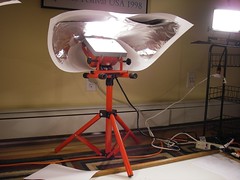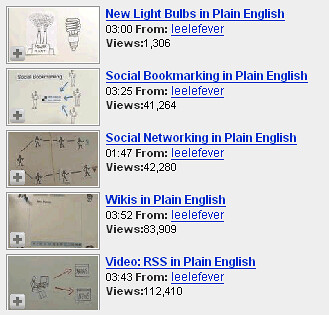I while back I wrote about solving problems when they need to be solved - and it's still very applicable. With every video we continue to learn and solve new problems.
In almost any video project, lighting is a huge factor we've learned so much. There are few more stark examples of our learning curve than the listing of our videos on our YouTube page. Notice the gradation of the white backgrounds:
You can see, right in the listing, our learning curve. Here are a few things we learned:
- Software works for lighting. We use Final Cut Express for editing our videos and Sachi has become a pro at adjusting the videos to be more bright using the color correction settings in the software. Color temperature is a big factor in making the whites look clean and bright.
- Exposure. We have become much more manual users of our camera - a Sony DCR - PC1000. We experimented with exposure and have found a manual exposure setting that works on the whiteboard. It's easy to tell when it's over-exposed by the look of skin tone. Also, over exposed videos come out pink when viewed online.
- White Balance. The same is true for white balance - manual settings create consistency.
Of course, when it comes to the actual lights, we're still using good ole' shop lights from the hardware store. We'll continue to tinker with these - maybe the tinfoil and posterboard isn't sustainable and may be a fire hazard.

Either way, we're excited to have discovered small things we can do to raise the visual quality of the videos.
